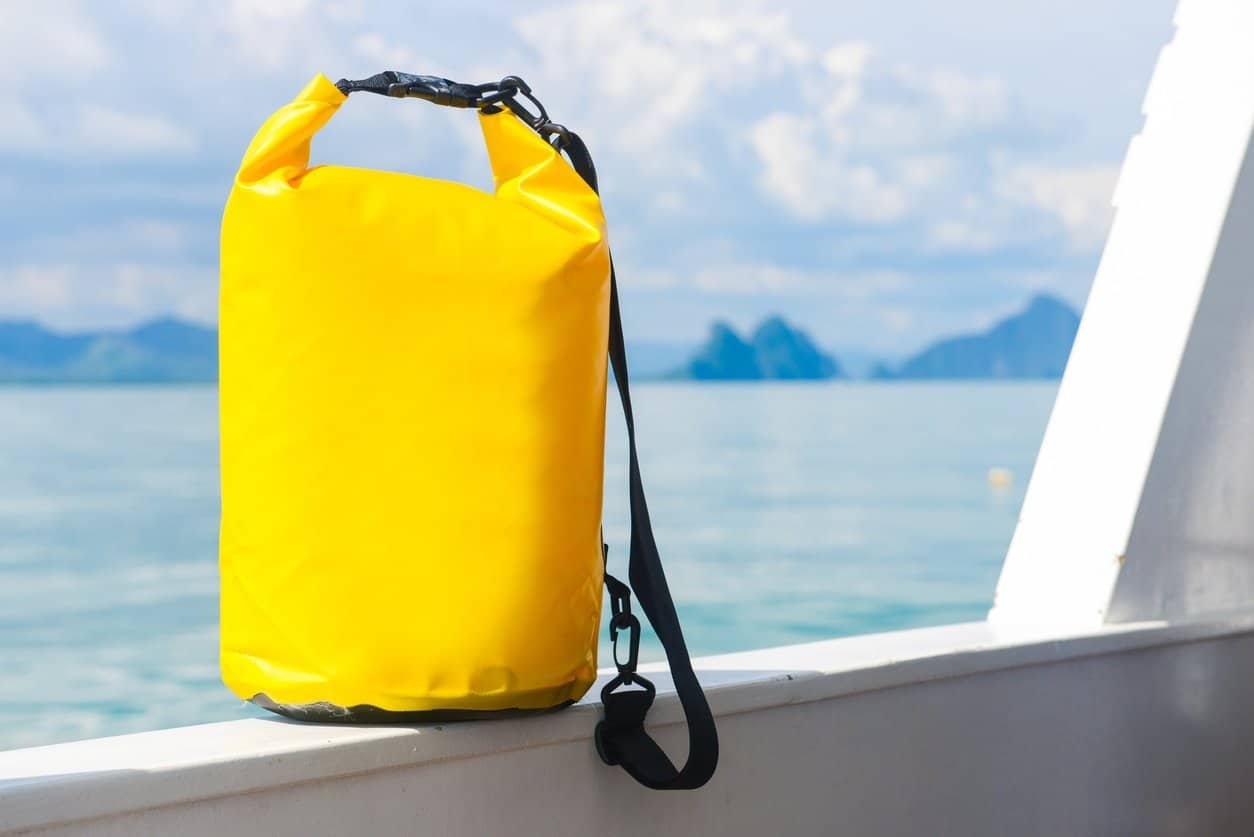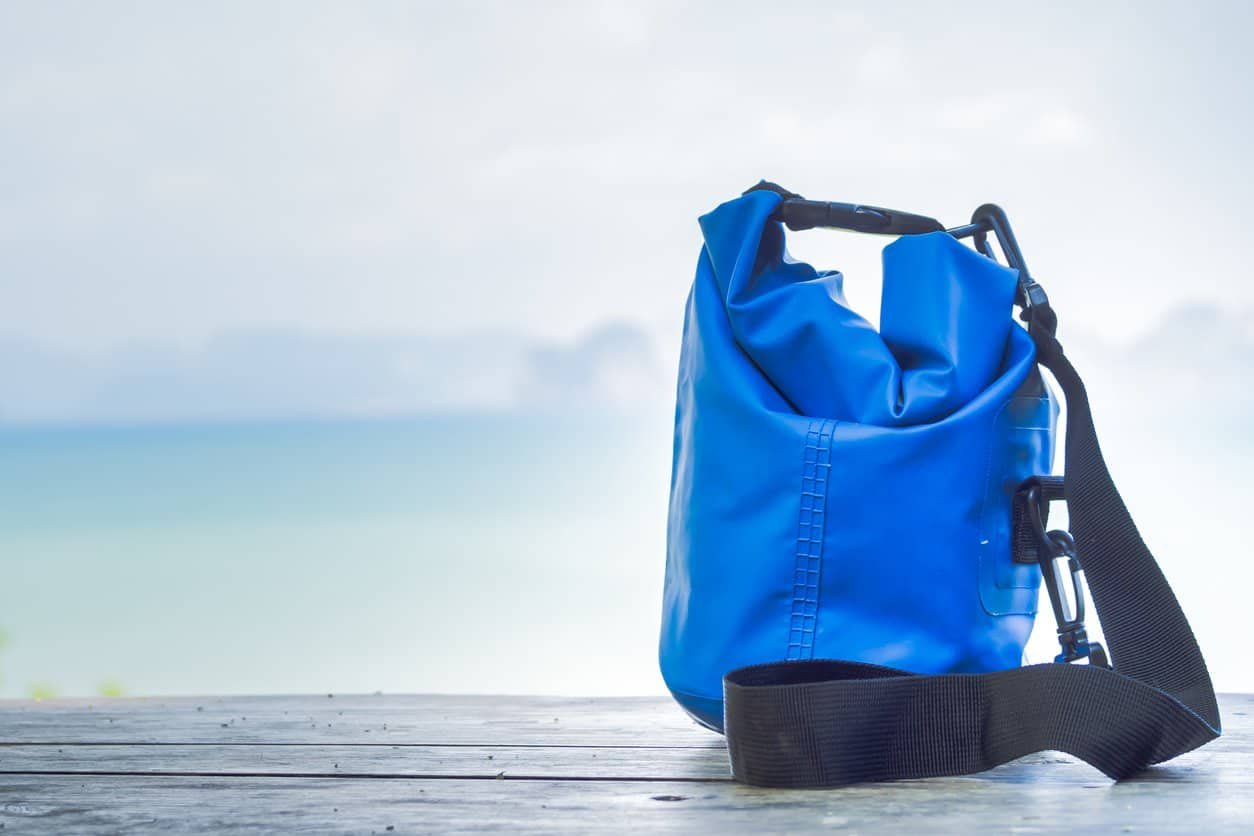In the world of outdoor adventures and water sports, dry bags serve as the unsung heroes, safeguarding our valuables and essentials from the capriciousness of water. Whether it’s a serene kayaking trip across a placid lake, a tumultuous whitewater rafting experience, or a rainy hike through lush forests, these waterproof marvels keep our gear dry and protected. However, after repeated exposure to the elements, dirt, sand, and possible microbial guests decide to make a home on them, raising a critical maintenance question: Can dry bags be washed? This exploration delves into the nuances of keeping your dry bag clean, ensuring that it remains a reliable guardian of your gear without compromising its integrity and waterproof capabilities.
Quick Insight
The quick and reassuring answer to whether dry bags can be washed is yes, but with a few caveats. The key to effectively cleaning your dry bag lies in understanding the specific materials it’s made from and the unique protective coatings that grant it its waterproof properties. This knowledge is crucial because the right cleaning method can refresh and extend the life of your dry bag, while the wrong approach might damage its waterproof seal or material integrity. From gentle hand washing to careful machine cleaning, the process involves more than just soap and water—it’s about preserving the very features that make your dry bag indispensable for outdoor adventures. This guide aims to illuminate the dos and don’ts of washing dry bags, empowering you to keep your gear not only dry but also clean and odor-free, ready for whatever your next adventure throws your way.

Understanding Dry Bag Materials
Delving deeper into the fabric of dry bags reveals a diverse landscape of materials, each chosen for its specific properties to resist water intrusion and protect your belongings. Understanding these materials is the first step in ensuring you employ the right care and maintenance techniques. Here’s a closer look at the common materials used in dry bag construction and their significance in determining how to wash them properly.
PVC (Polyvinyl Chloride)
PVC is renowned for its durability and resistance to abrasion and water. Often used in heavy-duty dry bags, PVC can withstand rough treatment, making it ideal for activities like rafting or rugged outdoor expeditions. However, PVC requires careful cleaning to maintain its waterproof integrity. Harsh chemicals or abrasive brushes should be avoided, as they can damage the surface and compromise the waterproof seal.
Nylon Coated with TPU (Thermoplastic Polyurethane)
Nylon, when coated with TPU, strikes a balance between lightweight flexibility and waterproof strength. This combination results in dry bags that are not only resistant to water but also resilient against tears and punctures. Cleaning a TPU-coated nylon dry bag involves mild soap and lukewarm water to preserve the coating’s effectiveness. It’s essential to avoid high heat when drying, as it can cause the material to warp or peel.
Vinyl
Vinyl dry bags offer a clear advantage for those who prioritize visibility of their contents, along with waterproof protection. While vinyl is inherently water-resistant, it’s also prone to becoming stiff in cold temperatures. Cleaning these bags gently with a soft cloth and a mild cleaning solution can prevent cracking or clouding of the material, ensuring that your belongings remain visible and protected.
Oxford Cloth
Oxford cloth, often used in lightweight and foldable dry bags, is prized for its durability and ease of transport. While it provides a degree of water resistance, especially when treated with waterproof coatings, oxford cloth dry bags should be cleaned gently to avoid wearing down the protective layers. A soft sponge and a mild detergent are sufficient for removing dirt without damaging the fabric.
Silicone-Coated Fabrics
For ultralight backpacking and minimalist camping, dry bags made from silicone-coated fabrics offer an unbeatable combination of water resistance and weight savings. These materials require minimal maintenance but should be washed with care to preserve their delicate waterproof coating. A gentle wipe-down with a damp cloth is often all that’s needed to keep these bags in top condition.
Can Dry Bags Be Washed?
Certainly, the ability to wash dry bags is a nuanced topic that hinges on understanding the materials and construction of each bag. Here’s an expanded look at how you can ensure your dry bag stays clean without compromising its integrity.
Basic Premise: Yes, But With Care
The foundational advice for washing dry bags is a cautious “yes.” It’s possible and often necessary to clean them to remove dirt, grime, and odors that can accumulate with regular use. However, the method of cleaning is pivotal. It involves a gentle approach, tailored to the bag’s specific material and construction, to avoid damaging the waterproofing capabilities or the material itself.
Drying: Air Dry Only
Avoid Heat: Never use a dryer, as the heat can melt or warp the fabric and seals. Instead, air dry your dry bag by hanging it upside down in a well-ventilated area out of direct sunlight, which can degrade the material over time.
Ensure Complete Drying: Before storing, ensure the dry bag is completely dry inside and out to prevent mold and mildew growth. This is especially important for bags that have been fully submerged or exposed to significant moisture.
Regular Maintenance: Beyond Washing
Spot Cleaning: For light soiling, spot cleaning with a damp cloth and mild soap can be sufficient without needing a full wash, extending the life of your bag.
Storage: Proper storage is essential for maintaining your dry bag’s condition. Store it in a cool, dry place, fully dry, and loosely folded or rolled to avoid creases that could stress the material.
Hand Washing: The Safest Method
Hand washing is universally recommended as the safest and most effective method to clean dry bags, ensuring they remain in optimal condition without compromising their waterproof integrity. This careful approach not only extends the lifespan of your dry bag but also maintains its performance for future adventures. Here’s a deeper dive into the hand-washing process, offering detailed steps and tips to achieve the best results.
Preparing for Cleaning
Empty and Inspect: Begin by emptying your dry bag completely. Inspect the interior and exterior for any signs of wear, damage, or particularly dirty areas that may need extra attention.
Pre-treatment for Stains: If there are noticeable stains, consider applying a mild stain remover or gently rubbing the area with a soft, damp cloth and a bit of mild soap. Let it sit for a few minutes before the full wash.
Choosing the Right Cleaning Solution
Mild Soap: Opt for a mild, non-detergent soap to avoid damaging the waterproof coatings. Harsh chemicals, bleach, or strong detergents can deteriorate the fabric and affect the bag’s waterproofing capabilities.
Dilution is Key: Dissolve a small amount of soap in a basin of lukewarm water, ensuring it’s well mixed. The water should be soapy but not overly concentrated.
The Washing Process
Gentle Submersion: Place your dry bag in the soapy water, ensuring it’s fully submerged. Gently agitate the water with your hands to help dislodge dirt and grime. For roll-top dry bags, unroll the top and clean inside the folds, as these areas can harbor debris and moisture.
Targeted Cleaning: Use a soft-bristled brush or a cloth for areas that need more focused cleaning. Pay special attention to seams, closures, and any spots with visible dirt or stains, applying gentle pressure to remove grime without damaging the material.
Rinsing Thoroughly: After washing, rinse the dry bag thoroughly under lukewarm running water to remove all soap residue. Incomplete rinsing can leave a filmy residue that attracts dirt and may compromise the bag’s water resistance.
Drying and Post-Care
Air Drying: Hang the dry bag upside down in a well-ventilated area out of direct sunlight. Ensure it’s fully open to allow air circulation inside the bag, facilitating even drying.
Avoid Heat Sources: Never attempt to accelerate the drying process with direct heat sources like hairdryers or radiators, as excessive heat can damage the waterproof coatings and material.
Post-Wash Inspection: Once the dry bag is completely dry, perform a final inspection for any missed spots or remaining stains. This is also a good opportunity to check the bag’s overall condition, ensuring that the washing process hasn’t affected its integrity.
Additional Tips
Frequency of Washing: Regularly clean your dry bag depending on the frequency of use and exposure to dirt, salt, or contaminated water. However, over-washing can stress the materials, so balance is key.
Storing Properly: Ensure your dry bag is completely dry before storing it in a cool, dry place to prevent mold and odor. Loosely folding or rolling the bag can prevent creases and stress on the material.
By following these hand-washing steps, you can effectively clean your dry bag while preserving its waterproof qualities, ensuring it remains a reliable part of your gear set for years to come.

Machine Washing: Proceed with Caution
Machine washing a dry bag is not universally recommended due to the potential risk of damaging the waterproof material or seal. However, in some cases, where the manufacturer indicates that machine washing is safe, it’s crucial to proceed with caution to preserve the integrity of your dry bag. Here’s an in-depth guide on how to carefully machine wash your dry bag, if deemed appropriate by the product’s care instructions.
Checking Manufacturer’s Recommendations
Before anything else, thoroughly review the care instructions provided by the dry bag’s manufacturer. These guidelines are paramount, as they consider the specific materials and construction of the bag. If machine washing is permitted, follow any specific advice or warnings provided to avoid causing damage.
Preparing Your Dry Bag for the Machine
Empty and Pre-Treat: Ensure the dry bag is completely empty and pre-treat any stains or heavily soiled areas with a mild detergent, applying it gently with a soft cloth.
Protective Measures: To reduce the risk of abrasion or snagging during the wash cycle, consider placing the dry bag inside a mesh laundry bag. This extra layer of protection helps safeguard both the dry bag and other items in the wash.
Close All Seals: If your dry bag has a roll-top closure, fasten it securely but do not roll it closed. For bags with zippers, close them to prevent the entry of water and soap into crevices that are difficult to rinse thoroughly.
Selecting the Right Machine Settings
Cold Water: Always use cold water for washing your dry bag to prevent any heat-related damage to the waterproof coating or material.
Gentle Cycle: Choose the gentlest wash cycle available on your machine. This setting minimizes the agitation and spin intensity, reducing the stress on your dry bag’s seams and material.
Mild Detergent: Use a small amount of mild, non-detergent soap. Harsh chemicals and fabric softeners must be avoided as they can degrade the material and affect the waterproofing.
Drying After Machine Washing
Air Dry Only: After the wash cycle, remove the dry bag from the mesh laundry bag (if used) and hang it to air dry in a well-ventilated area out of direct sunlight. Do not use a tumble dryer, as the heat can damage the bag.
Ensure Complete Drying: Turn the bag inside out during the drying process to ensure that both the interior and exterior are fully dry. This step is crucial to prevent mildew growth and remove any lingering dampness.
Post-Wash Inspection
Once the dry bag is dry, inspect it carefully for any signs of wear or damage, particularly along seams, closures, and areas that were pre-treated for stains. Verify that the waterproof integrity remains intact by checking for leaks or moisture penetration.
Considerations for Regular Maintenance
While machine washing might be an option for some dry bags, it’s generally preferable to hand wash to extend the lifespan of the product. Regular maintenance, including spot cleaning and airing out the bag after use, can significantly reduce the need for frequent machine washing.

FAQ
Q1: How often should I reapply waterproof treatments to my dry bag?
A: The frequency depends on how often you use your dry bag and the conditions it’s exposed to. As a general rule, reapply waterproof treatments once a season or after noticing a decline in water repellency. Always use treatments compatible with your dry bag’s material.
Q2: Can small punctures or tears in my dry bag be repaired to restore waterproof integrity?
A: Yes, small damages can often be repaired using a repair kit designed for the specific material of your dry bag. Follow the instructions carefully to ensure the repair maintains the bag’s waterproof properties.
Q3: Is it safe to store electronic devices in my dry bag?
A: While dry bags are designed to keep contents dry, it’s always wise to take extra precautions with electronics by using additional protective layers, such as waterproof cases or ziplock bags, especially during prolonged exposure to water or during activities with a higher risk of submersion.
Q4: Can folding or rolling my dry bag for storage damage its waterproof coating?
A: Repeated folding or creasing in the same spots can stress the material and potentially affect the waterproof coating over time. It’s best to loosely roll or fold your dry bag without sharp bends and store it in a dry, cool place.
Q5: How do I know when it’s time to replace my dry bag?
A: Consider replacing your dry bag if you notice persistent leaks, significant wear or damage that can’t be effectively repaired, or if the material has become stiff, discolored, and no longer functions as intended. Upgrading to a new dry bag ensures continued reliable waterproof protection.
Q6: After repairing a tear in my dry bag, will it still be as waterproof as before?
A: Effective repairs using the right materials and techniques can restore a significant degree of waterproofness. However, the repaired area might not be as robust as the original material. Always inspect the repair before relying on the bag in critical situations.
Q7: Can freezing temperatures damage my dry bag?
A: Some materials may become less flexible and more prone to cracking in extreme cold. If your dry bag will be exposed to freezing temperatures, choose one made from materials known for cold resistance and handle it gently when cold.
Conclusion
Understanding how to properly care for and maintain dry bags illuminates the broader importance of mindful gear management. These critical tools, designed to protect our belongings from water, demand regular cleaning, careful use, and timely repairs to uphold their waterproof capabilities. The discussions here aim to empower users with the knowledge to effectively extend the lifespan of their dry bags, aligning with a sustainable approach to outdoor adventuring.
The narrative around washing dry bags extends beyond cleanliness, touching on the principles of sustainability and respect for the environment. Proper care reduces the need for replacements, echoing the ethos of outdoor enthusiasts committed to preserving the natural world.
In summary, the health of your dry bag—and, by extension, the security of your adventure essentials—rests on the attention and care you provide. Simple practices like routine inspections and gentle cleaning contribute significantly to the reliability and longevity of your gear. By adhering to these principles, you ensure that your dry bag remains a steadfast companion on all your adventures, embodying a spirit of stewardship towards our cherished outdoor gear and the environments we explore.

